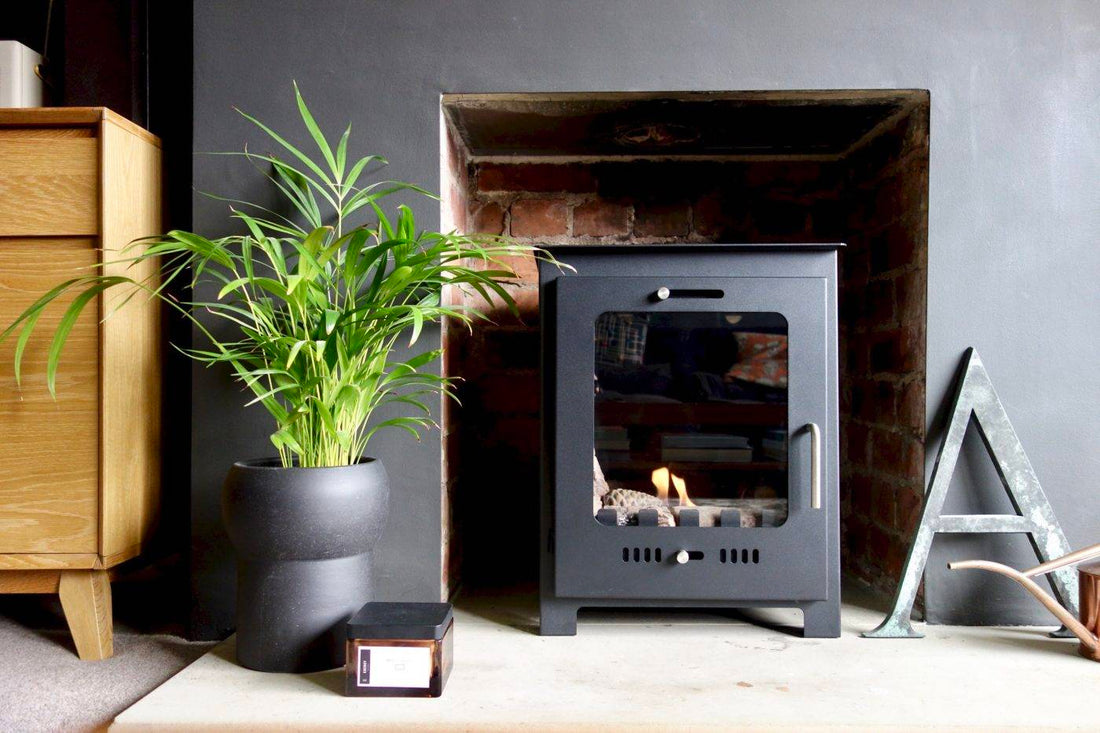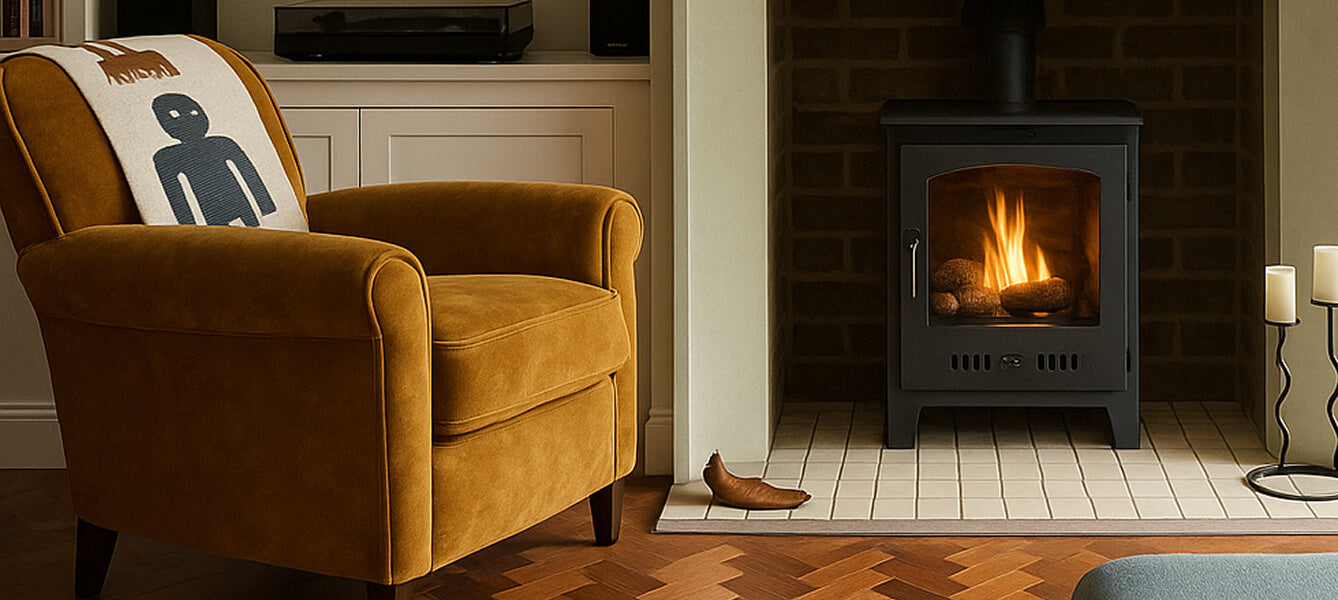
Wood Burning Stove Ban: Why More People are Turning to Bio Fires
People have been loving open fires since the start of time, and no matter what the latest interior design trend, everyone returns to the heart of the home, the real fire that warms and creates a cosy atmosphere.
In recent years, the wood burner has been one of the most popular ways of having a real fire in the home. In the last few years, however, their popularity has been decreasing, due mainly to increasing concerns about the impact they are having on pollution, both inside and outside the home.
Here’s why more and more people are turning to alternative smokeless fires, such as bioethanol fireplaces.
Are Wood Burning Stoves Being Banned in UK?
In order to help reduce high levels of air pollution, the government recently announced plans to phase out two of the most polluting fuels in England. The most popular form of wood used in log burners is wet wood, found for sale at many popular DIY stores and garden centres.
This wood, along with coal fires, is suspected of being one of the largest sources of fine particulate matter (PM2.5), making it a leading contributor to air pollution. These particles are inhaled into the lungs and bloodstream, which is deemed a considerable health risk.
Are log burners dangerous or safe? Can I still use my wood burner in 2020?
As a result of pollution concern, the government now intends on banning the sale of wet wood and coal for fires in favour of more sustainable options.
So, if you already have a wood or coal burning fireplace, you will still be able to enjoy it, but you will need to use alternative fuel options with the potential wet wood ban.
Newer versions of woodburners have also been developed that reduce the level of harmful emissions when any fuel is used, but there are still some concerns that even these do not totally remove all potential pollutants.
What can you burn instead of wood?
The government is suggesting wood burning stoves use dry wood (ideally from a sustainable source) or wood briquettes consisting of compressed sawdust and wood chips which, whilst still posing some air pollution impact, are deemed to be less harmful than the wet wood or coal options.

Will there be a wood burner ban in the future?
Banning log burners would hava a huge impact on fireplaces.
Whilst we can’t read the future, it is clear that governments are making clear attempts to limit the pollution we create, and wood burning stoves are known to give off smoke and contribute to the cutting down of trees. Illegal deforestation is also a concern which may lead to a log burner ban in future.
Therefore we can’t rule out wood burning stoves getting banned.
Is a wood burning stove bad for your health or the environment?
Wood burning stoves have been highlighted as having some repercussions on health, due to the release of pollutants, toxic gases and particle pollution.
That may be why people report coughing and shortness of breath for a few days after wood stove fire use, and recurrent exposure can increase risk of lung damage, lung disease and cancer.
Can you get carbon monoxide poisoning from a wood burning stove?
What are the wood burner health risks then? Technically you can get carbon monoxide poisoning from a wood burning stove, but this is also possible with other home appliances, not just wood burning stoves. Anything that uses fuels is technically a risk.
Is a wood burning stove eco-friendly?
There are many reasons why a wood burning stove is not eco-friendly including:
- Deforestation for wood
- Contribution of particulate matter, affecting air pollution
- Regular upkeep, checks and maintenance which cause a carbon footprint

Aside from these pollution issues, there are other reasons why you may like to consider alternative smokeless fuel options.
Installation of wood burners can be an expensive and time-consuming task, and usually it is advised that this must be completed by a professional installer.
Due to the time, expense and hassle of installing a wood burner, they are never going to be suitable for anyone who rents a property or are unsure if they are going to be living in the property for a very long time.
As they are often not using smokeless fuels, wood burners also require on-going maintenance. This covers a wide variety of issues, from needing to ensure the chimney or flue is maintained regularly, to needing to frequently clean out the residue from the burning of the fuel.
Not exactly as hassle free solution.
What is the best alternative to wood burning stove?
Bioethanol fireplaces are rising in popularity thanks to them being easy (and free!) to install, as well as being maintenance free and yet still give off a lovely real flame from a totally smokeless fuel.
Our customers love the easy set-up that a freestanding bio fire allows.
When it comes time to freshen up the interior design of your lounge, the great thing is the biofire can easily be repositioned within the same or other rooms without needing to call in an expensive professional.
Bioethanol fireplaces run on smokeless bioethanol fuel, which contain natural products such as maize, with none of the kindling or pollution issues that the government report has highlighted.
Biofires are not intended to replace your existing primary heat source but are for decorative residential use, but that doesn’t mean you won’t get a great amount of heat from them.
You can read some of our hundreds of great reviews that mention how pleasantly surprised customers are with the heat they emit.
Also at ImaginFires, we have patented no-spill technology within our fuel boxes and have a range of fireplace designs, from inserts that are perfect for an already established mantelpiece in need of a real fire, to wall mounted designs, to the popular Scandinavian-style fireplaces.
Still love the look of a traditional wood burner but unsure how to compromise? We understand.
That’s why we have a whole section of fireplaces designed for people who want their fireplace to look and feel like a wood burning fire but without the complexity. Many models have the option to gather some wood to style around the fireplace or use our ceramic decorative logs.

Then simply pour in our smokeless bioethanol fuel and away you go! We even offer a range of flues to finish the look of the wood burner effect.
The upcoming wood stove ban does not have to totally limit your enjoyment of your wood or coal burning stove, but should you be thinking of an easier, smokeless and great value alternative, then our range of bioethanol fireplaces are ideal.
